Abstract
Studies of the effect of Hong Kong (HK) influenza vaccine were made in adults and children in Great Britain during 1968 and 1969. The vaccines were administered intramuscularly and also by intranasal spray. The serum antibody response was studied in 284 subjects. Most developed rising titres to vaccine given intramuscularly and few to vaccine given intranasally. Deoxycholate-split vaccine was as potent as conventional whole virus vaccine. Antibody titres were maintained for months. Over 4000 subjects in factories, offices and schools were observed during the epidemic. The incidence of disease was not significantly reduced by either form of vaccination. A survey was made of epidemics in boarding schools in which some of the pupils had been vaccinated, in six with commercial polyvalent vaccine and in five with HK; there was a lower incidence of influenza in two schools vaccinated 2 or 4 weeks earlier with HK vaccine.
Full text
PDF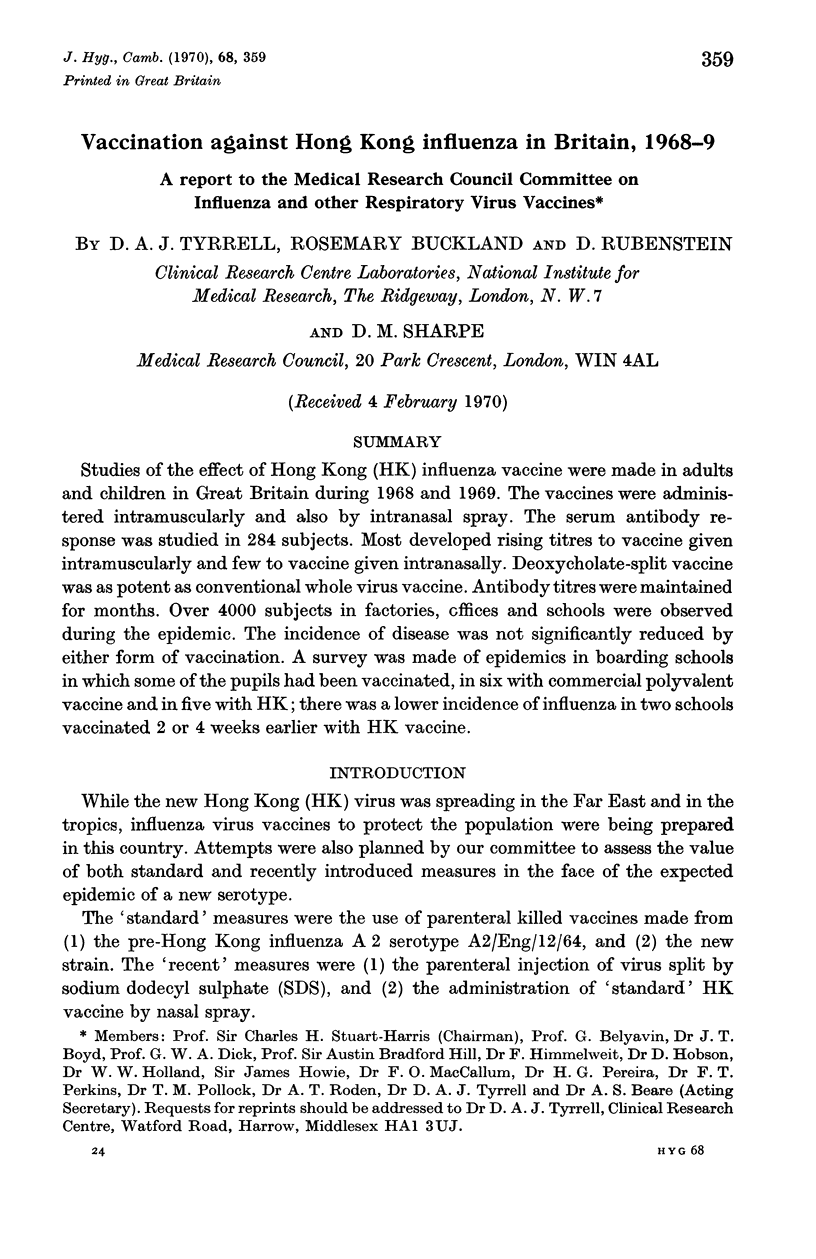
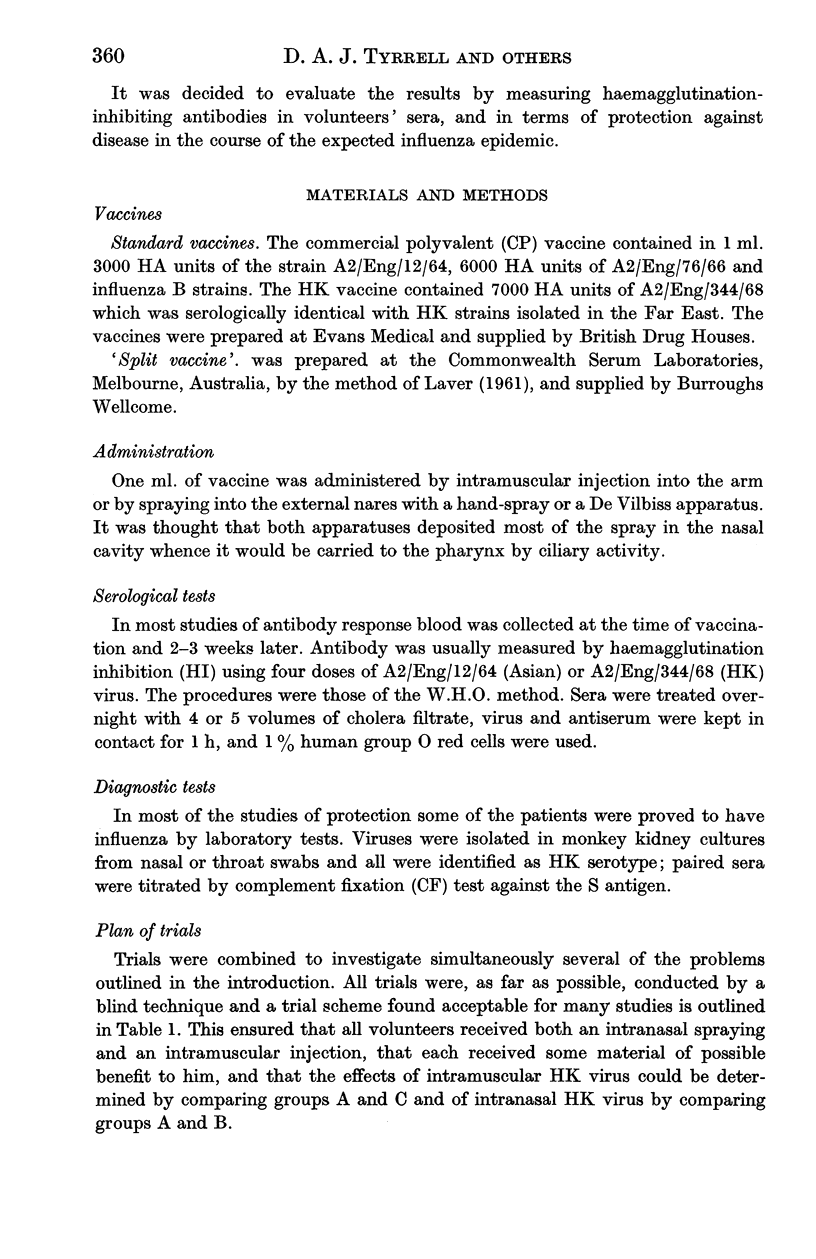

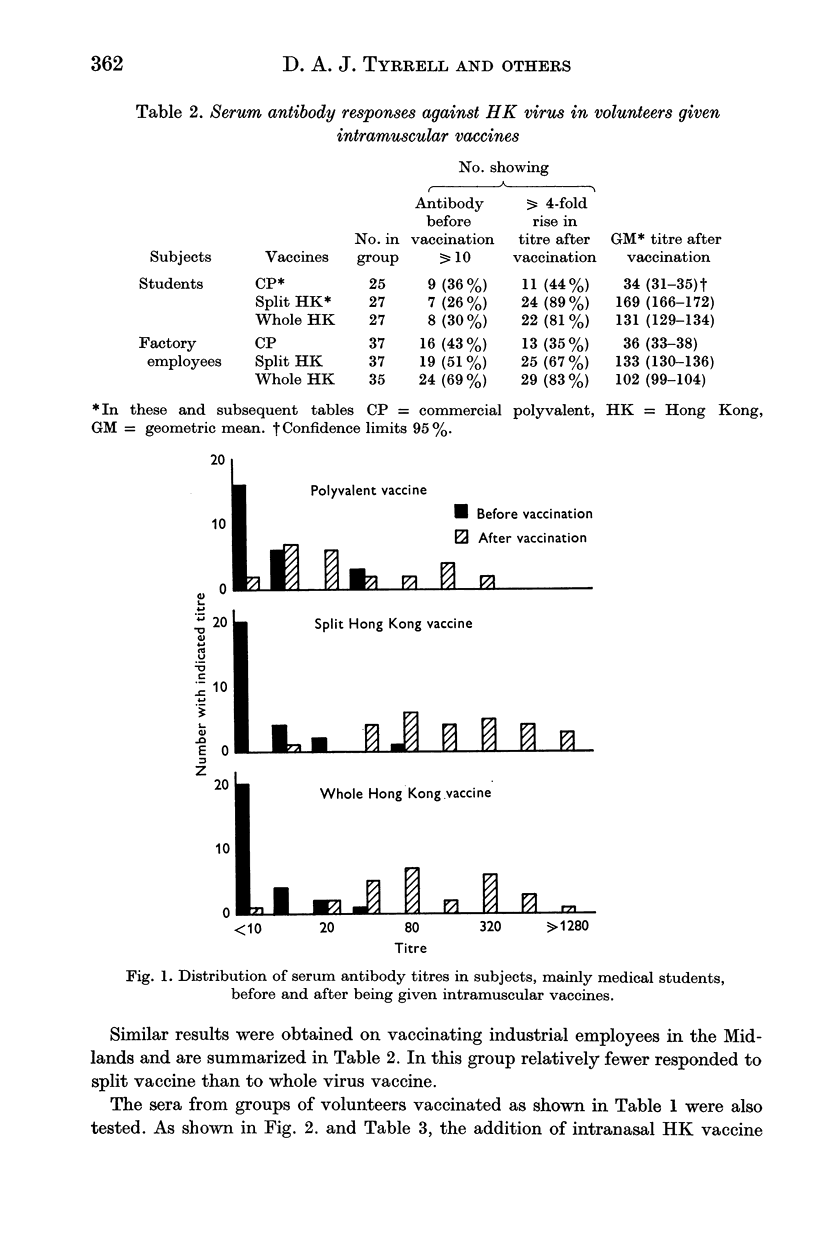
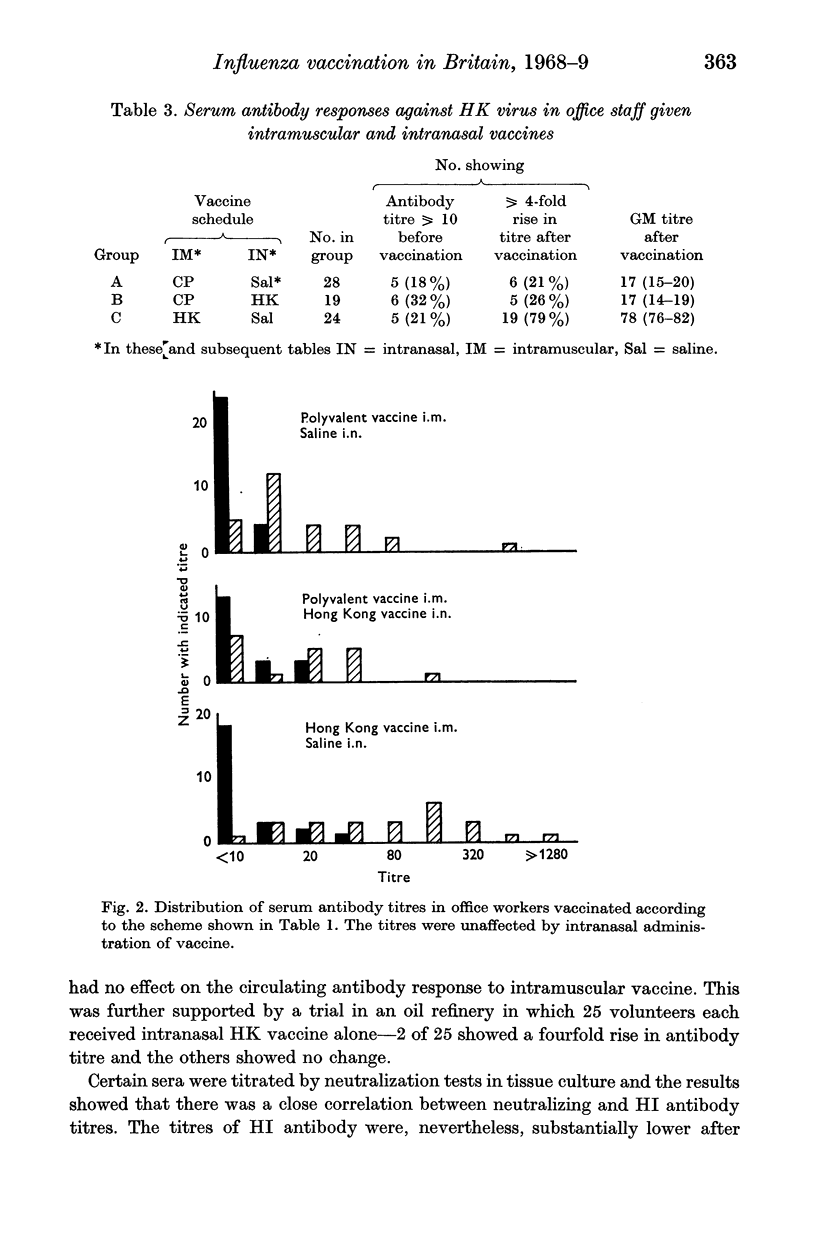
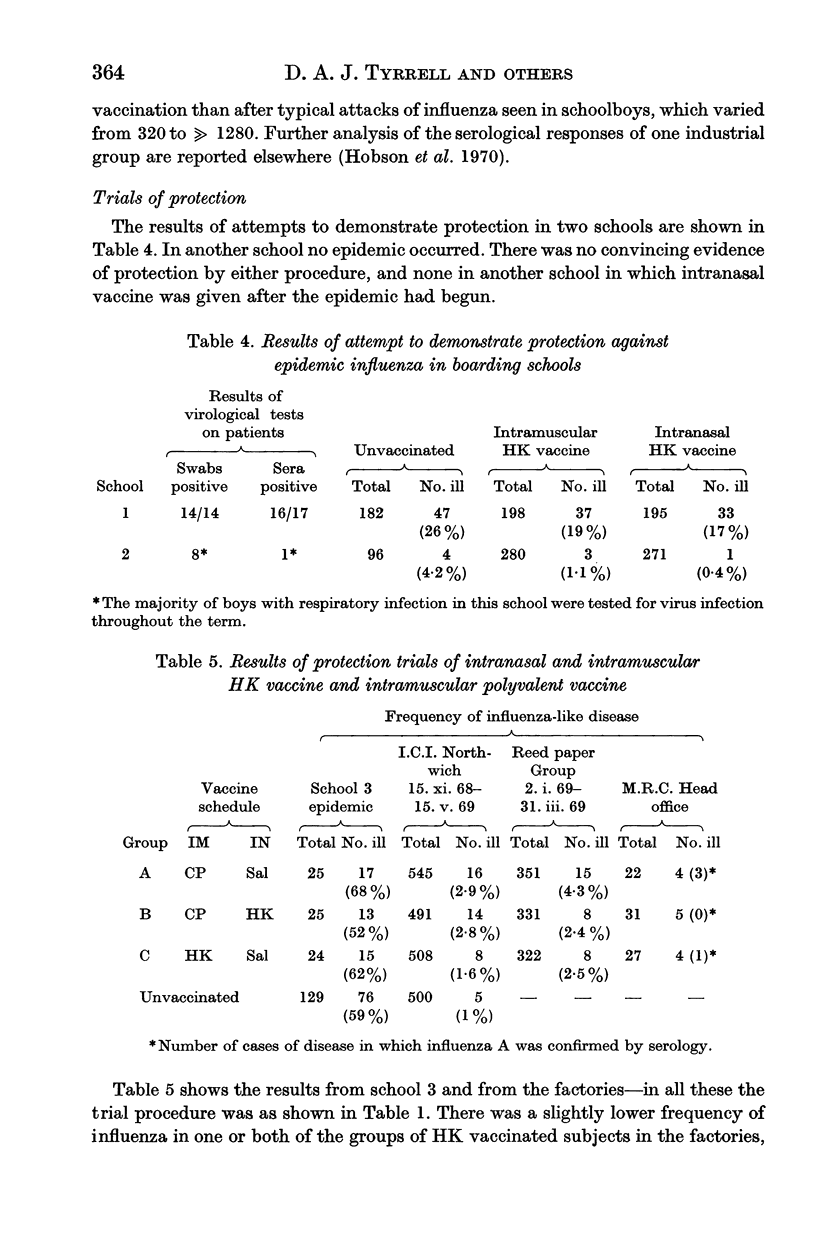
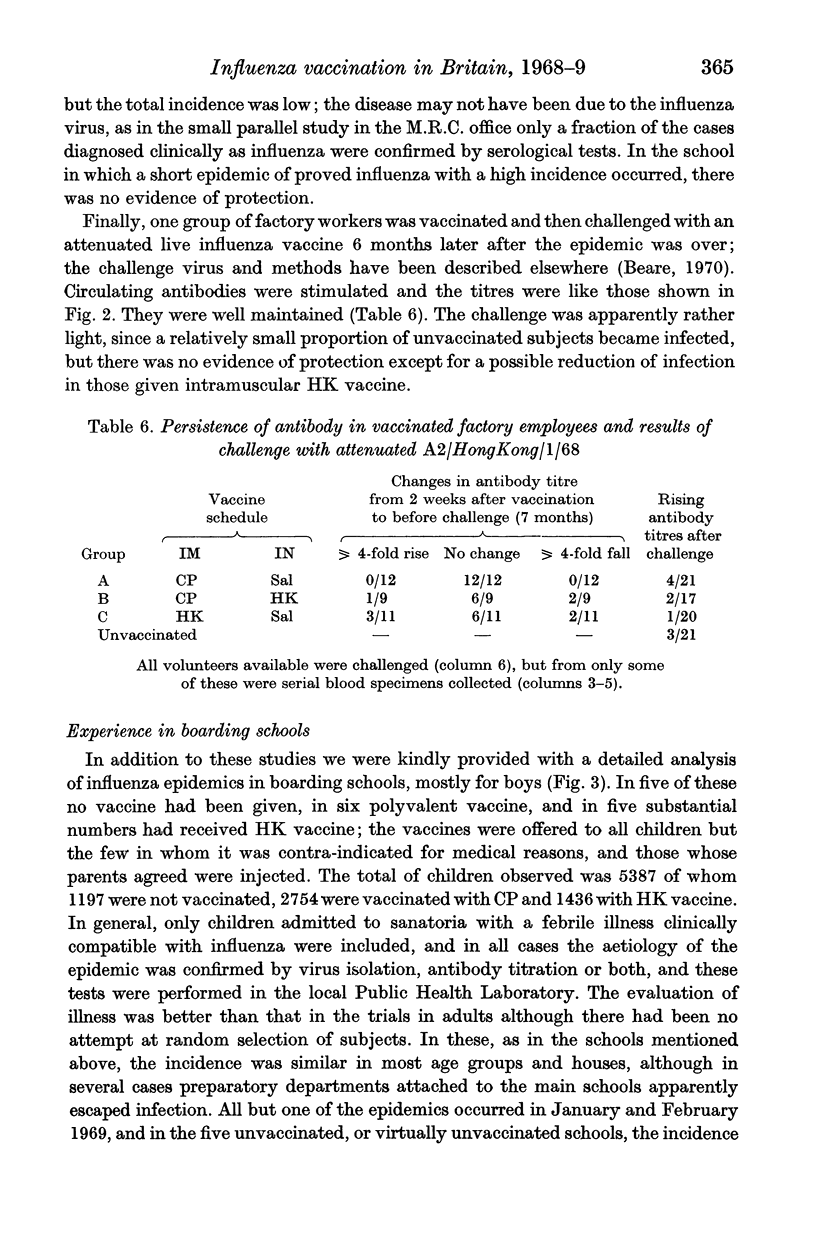
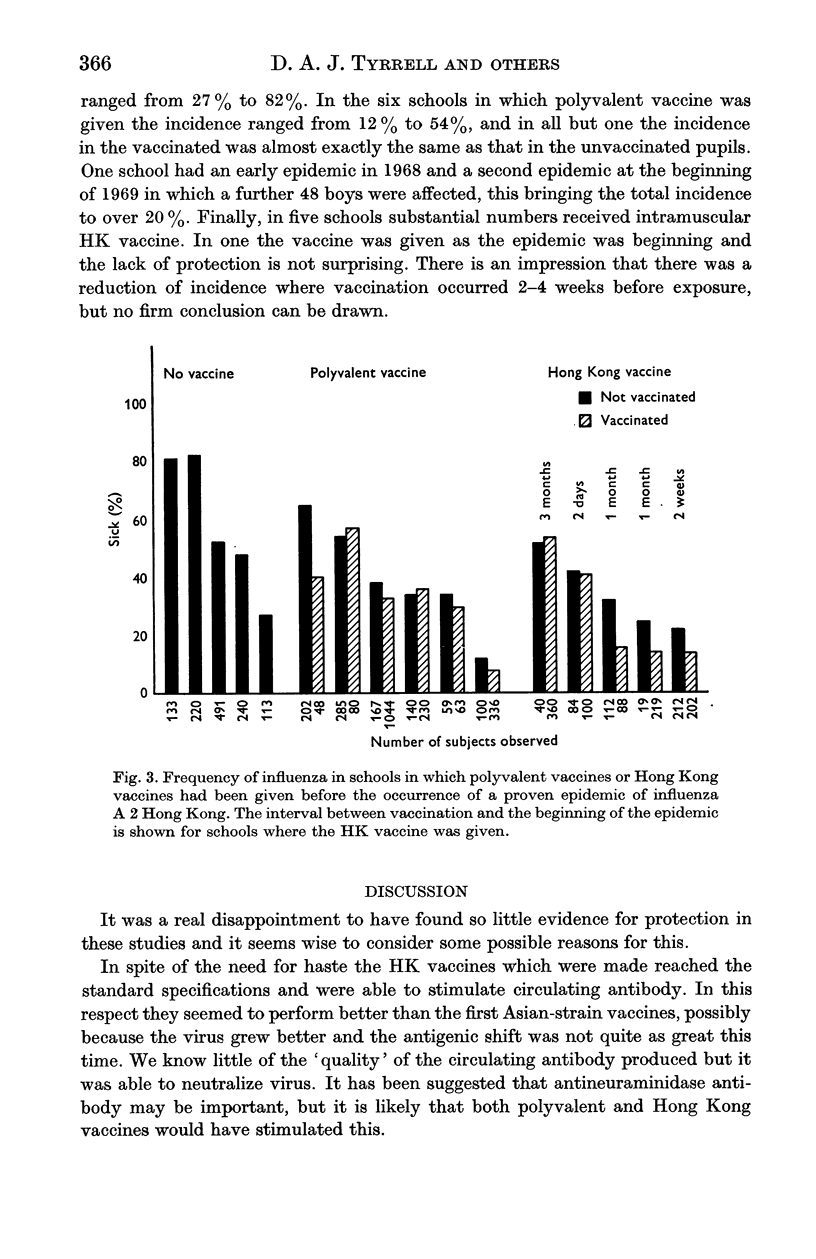
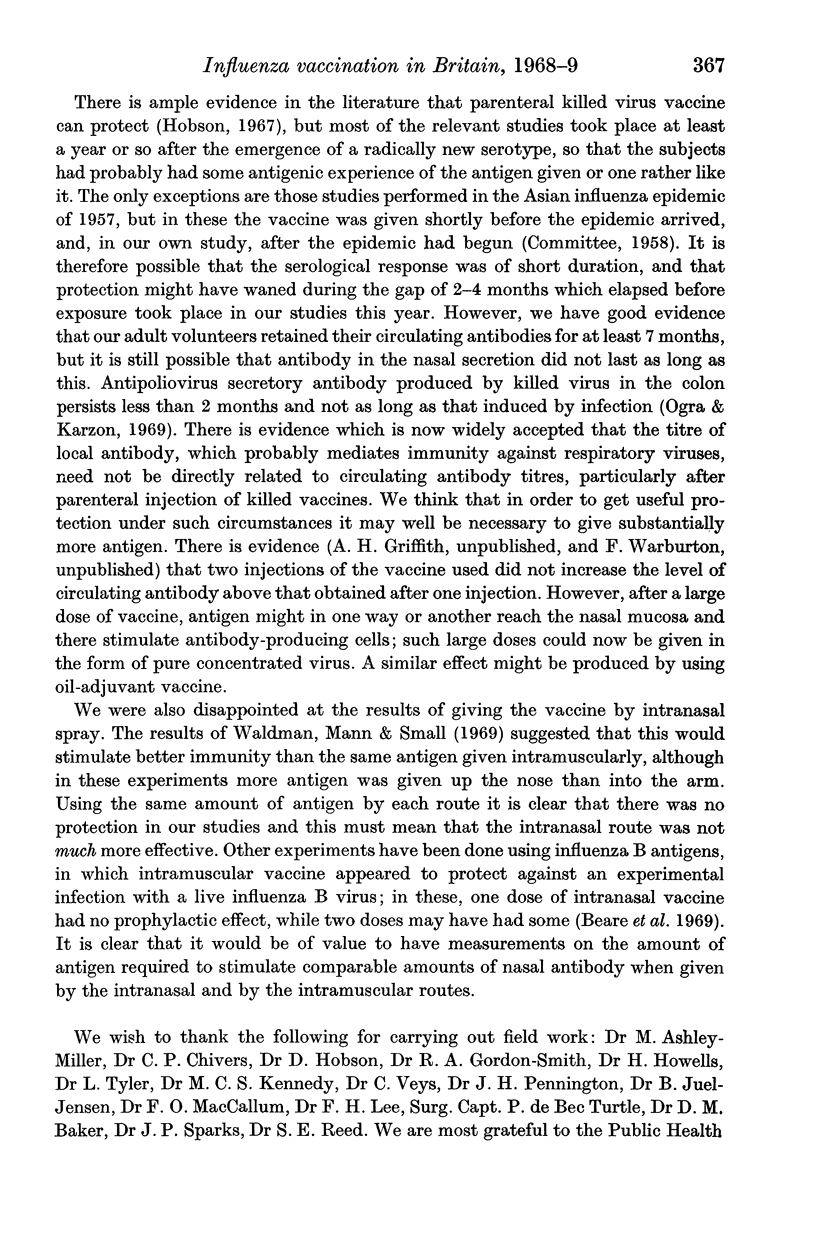
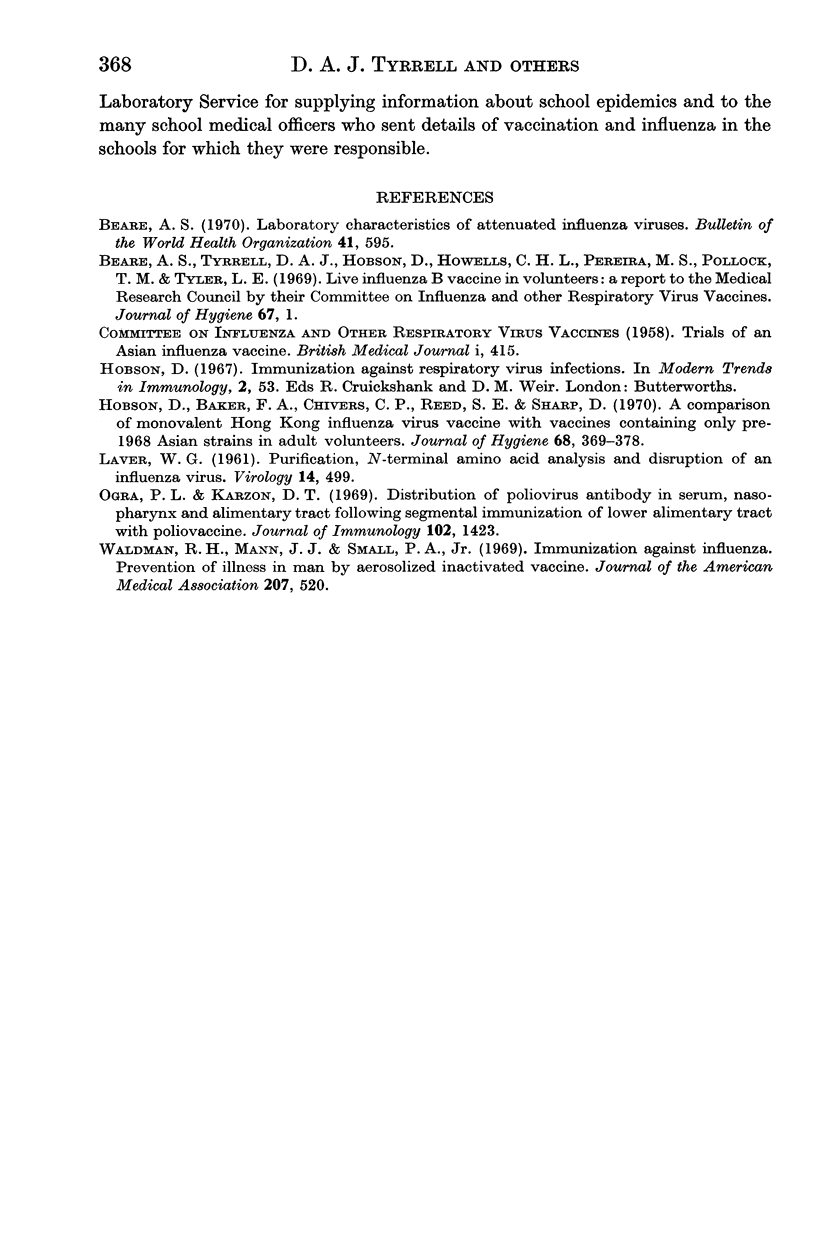
Selected References
These references are in PubMed. This may not be the complete list of references from this article.
- Beare A. S. Laboratory characteristics of attenuated influenza viruses. Bull World Health Organ. 1969;41(3):595–598. [PMC free article] [PubMed] [Google Scholar]
- Beare A. S., Tyrrell D. A., Hobson D., Howells C. H., Pereira M. S., Pollock T. M., Tyler L. E. Live influenza B vaccine in volunteers. A report to the Medical Research Council by their Committee on Influenza and Other Respiratory Virus Vaccines. J Hyg (Lond) 1969 Mar;67(1):1–11. doi: 10.1017/s002217240004136x. [DOI] [PMC free article] [PubMed] [Google Scholar]
- Hobson D., Baker F. A., Chivers C. P., Reed S. E., Sharp D. A comparison of monovalent Hong Kong influenza virus vaccine with vaccines containing only pre-1968 Asian strains in adult volunteers. A report to the Medical Research Council Committee on Influenza and other Respiratory Virus Vaccines. J Hyg (Lond) 1970 Sep;68(3):369–378. doi: 10.1017/s0022172400042273. [DOI] [PMC free article] [PubMed] [Google Scholar]
- LAVER W. G. Purification, N-terminal amino acid analysis, and disruption of an influenza virus. Virology. 1961 Aug;14:499–502. doi: 10.1016/0042-6822(61)90348-8. [DOI] [PubMed] [Google Scholar]
- Ogra P. L., Karzon D. T. Distribution of poliovirus antibody in serum, nasopharynx and alimentary tract following segmental immunization of lower alimentary tract with poliovaccine. J Immunol. 1969 Jun;102(6):1423–1430. [PubMed] [Google Scholar]
- Waldman R. H., Mann J. J., Small P. A., Jr Immunization against influenza. Prevention of illness in man by aerosolized inactivated vaccine. JAMA. 1969 Jan 20;207(3):520–524. doi: 10.1001/jama.207.3.520. [DOI] [PubMed] [Google Scholar]


